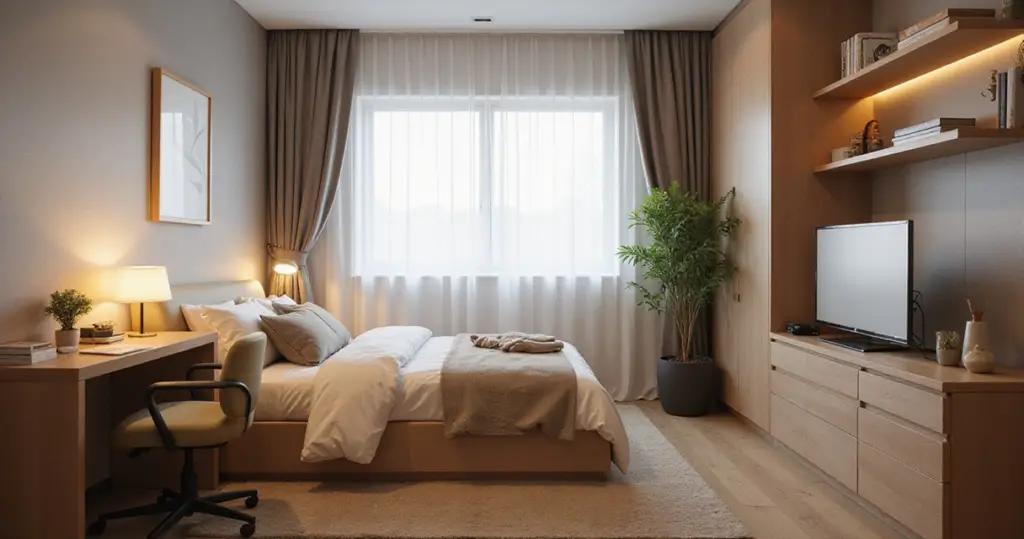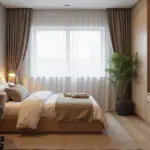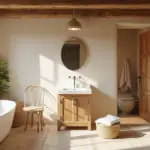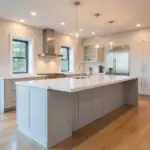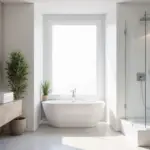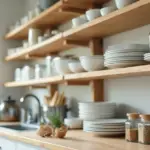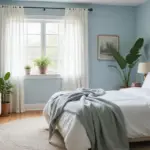You know what people always ask me? They have this small apartment bedroom, maybe one window looking onto a brick wall, and they say, “Remi, how do I make this feel like a place I actually want to be?” They think the problem is the size of the room, but that’s rarely the real issue. The real issue is that we treat our bedrooms like storage closets we happen to sleep in, instead of what they should be: a personal ecosystem designed to help us rest, recharge, and grow.
Forget the perfect, sterile rooms you see in catalogs. That’s just noise. What really matters is creating a space that works with you and for you. It’s about smart, intentional choices that make your life better, easier, and more connected to the world, even from a fifth-floor walk-up. I’m going to walk you through the real, no-nonsense strategies—the stuff you’ll actually use—to turn that box into a sanctuary.
Foundational Planning & Maximizing Small Spaces
Before you buy a single pillow or paint chip, we need to get the foundation right. This is the stuff that makes the biggest difference with the least amount of money. It’s about seeing your room not just as four walls, but as a living, breathing system that you are a part of.
1. Define Your Bedroom’s Core Functional Needs and Desired Mood
Okay, first things first. Before you fall in love with a cool-looking bed frame online, stop and ask yourself a dead-simple question: “What do I actually do in here besides sleep?” Be honest. Is it your office? Your gym? Your late-night Netflix cinema? Your dressing room? List it all out. Your bedroom has a job to do, and if you don’t give it a clear job description, it’s going to fail. Once you know its functions, think about how you want to feel in the space. Use three words. “Calm, cozy, and airy,” or “Creative, warm, and restorative.”
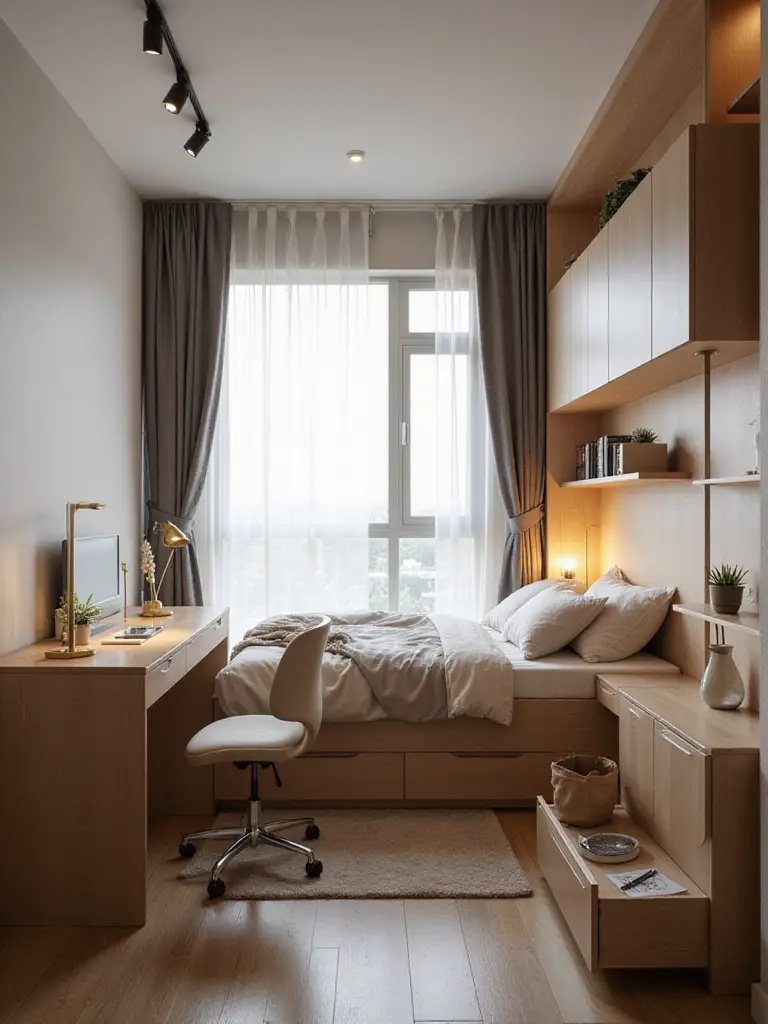
This isn’t fluffy, artsy stuff; it’s the most practical step you can take. I once had a client who was miserable in her bedroom. She’d bought all this minimalist furniture because it was trendy, but what she craved was “cozy, safe, and lush.” Her room was actively working against her nervous system! We swapped her sleek metal bed for an upholstered one, added a plush rug and some heavy curtains, and she immediately felt better. Your space should be your ally, so define the mission first.
Now that you know what the room is for, let’s talk about what needs to go.
2. Clear Clutter Ruthlessly to Maximize Visible and Usable Space
Here’s a pet peeve of mine: people buy fancy storage bins before they’ve actually dealt with their stuff. That isn’t organizing; it’s just giving your junk a prettier home. The most impactful and totally free thing you can do for your room is a ruthless decluttering. I’m not just talking about tidying up. I’m talking about a full-on purge. Create three piles: Keep, Donate/Sell, and Trash. If you haven’t touched it in a year and it doesn’t make you deeply happy, it goes.
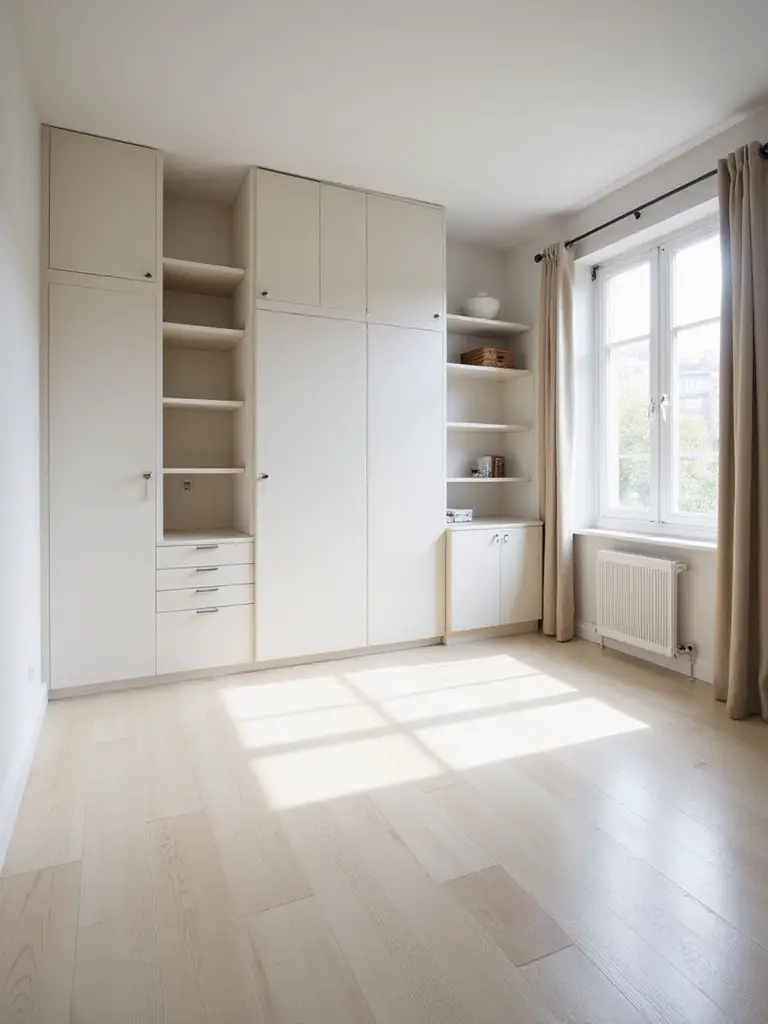
Think of clutter as static. It’s visual and mental noise that prevents your personal ecosystem from thriving. It collects dust, blocks airflow, and constantly pulls at your attention. You can’t feel rested in a room that’s screaming a to-do list at you. A client once told me her bedroom felt 50% bigger after we spent a single Saturday filling up donation bags. She hadn’t gained a single square foot, but she gained breathing room. That’s the magic. And a great shortcut to keeping it that way? The “One In, One Out” rule. For every new thing you bring in, something else has to go.
With a clean slate, it’s time to think about color in a strategic way.
3. Choose a Cohesive Color Palette for a Calming and Expansive Feel
Color isn’t just decoration; it’s a tool that can physically alter your perception of a space. In a small bedroom, your goal is to create a cohesive, calming backdrop. This is not the time for an accent wall in a jarring, trendy color you’ll hate in six months. The big secret is to lean into a limited, harmonious palette. Pick a primary light, neutral color—like a soft white, a warm grey, or a calming beige—for your walls. This will be your workhorse, bouncing light around and making the room feel more expansive.
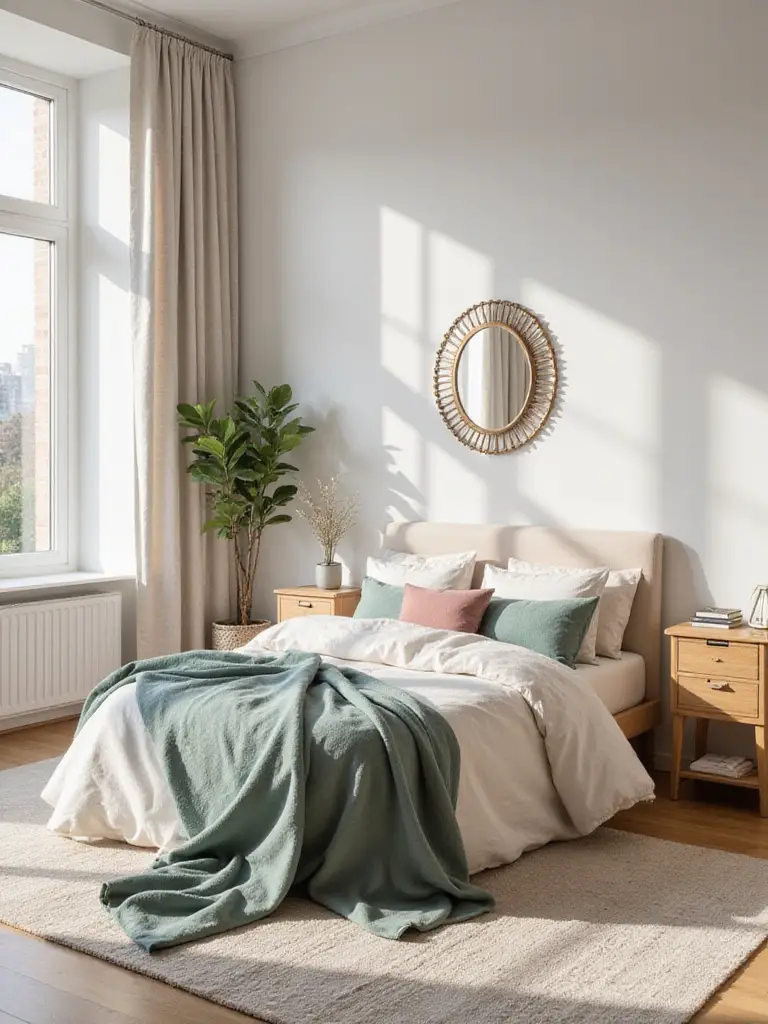
Then, choose one or two supporting colors—maybe a sage green, a dusty blue, or a warm terracotta—and weave them in through your bedding, a rug, or a piece of art. The goal is to create a serene visual story, not a chaotic explosion of color. I learned this the hard way in my first apartment. I painted one wall a deep, dramatic navy. It looked great in photos, but in reality, it just felt like the wall was constantly falling on me. I repainted it a soft, cloudy grey, and suddenly the entire room could breathe.
Your beautiful new color palette is nothing without good light, so let’s tackle that next.
4. Assess Natural Light to Strategically Optimize Room Brightness
I think of our bodies like houseplants. We have our own circadian rhythms, and we need light to thrive. Your bedroom’s light is a powerful, free resource, so you need to manage it. Spend a day just observing. Where does the light come from? When is it bright and direct? When is it soft and ambient? You can’t fight the light your room gets, but you can work with it. If you have a dark room with a single north-facing window, painting it a dark color will just create a cave.
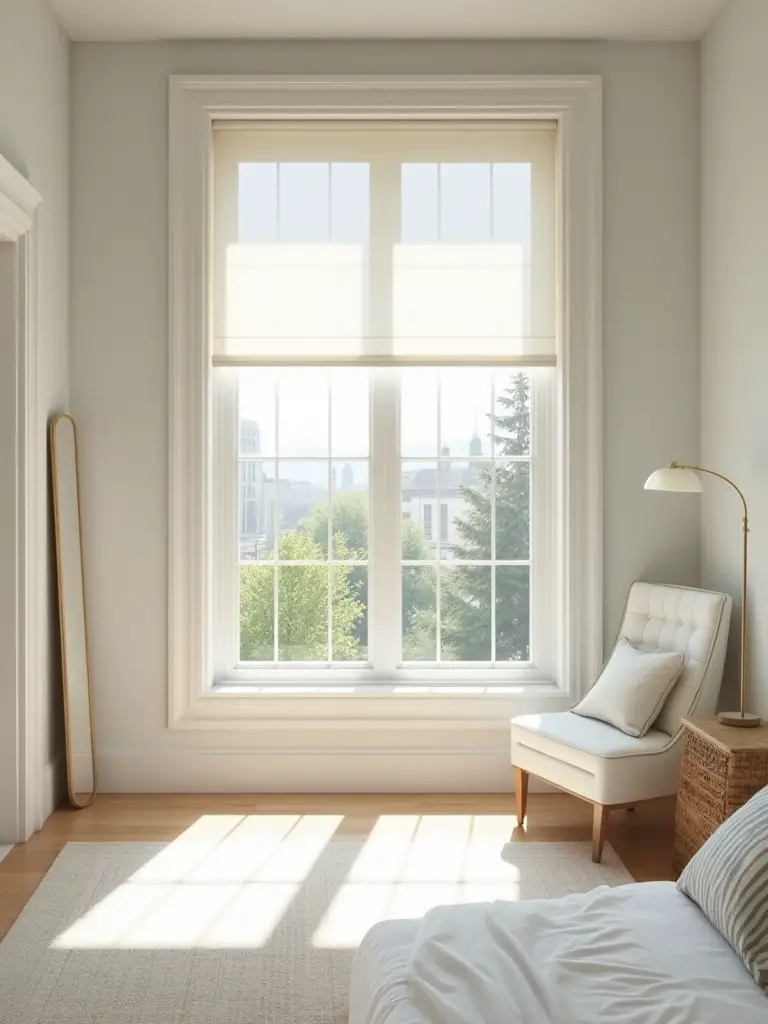
The absolute best shortcut for a dark room is a giant mirror. Place a large mirror directly opposite your main window. I’m not exaggerating when I say this can literally double the amount of light in your space. It acts like a second window, capturing and bouncing all that precious daylight back into the room. Another tip is to look at a paint’s LRV, or Light Reflectance Value. It’s a number from 0-100. For a small or dark room, you want something over 60 to maximize the light you have. Your bedroom isn’t just a box; it’s a solar-powered recharging station for you.
Now let’s look up and start using the space most people forget.
5. Utilize Vertical Space with Smart Wall-Mounted Shelves and Decor
Everyone gets obsessed with floor space, but they completely ignore the most valuable real estate in a small apartment: the walls. Thinking in three dimensions is the key to unlocking a small room’s potential. Wall-mounted floating shelves are your best friend. They give you storage and display space for books, plants, and beautiful objects without taking up a single inch of the floor. Your eye is drawn upward, which creates the illusion of higher ceilings.
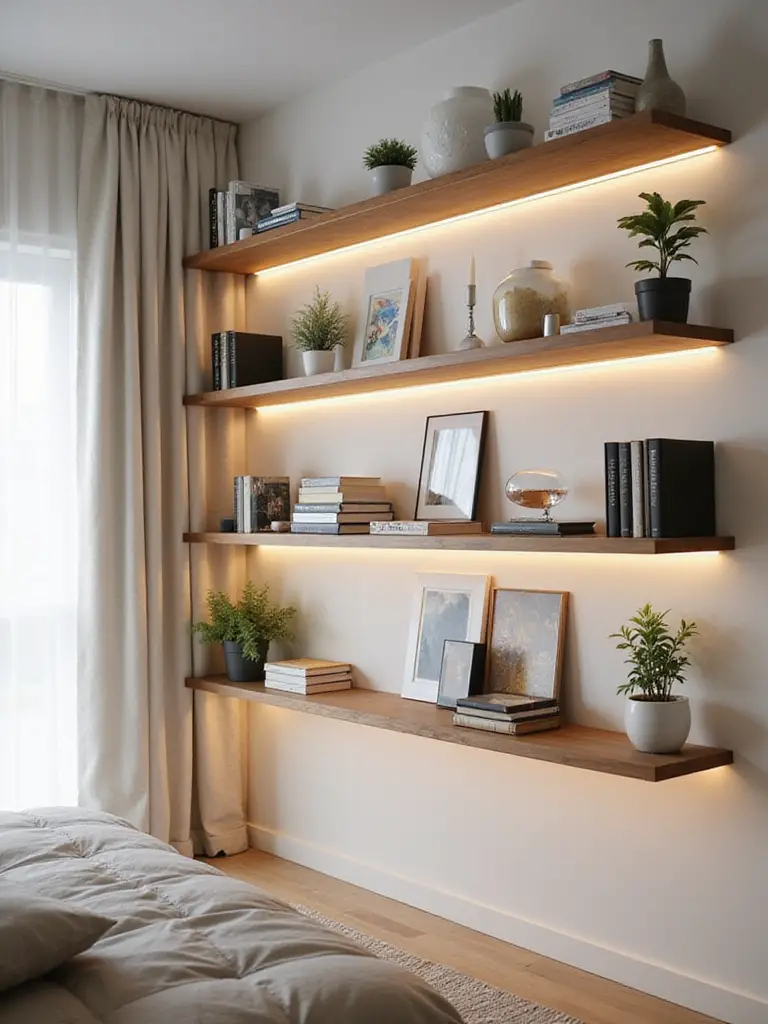
Install shelves above your headboard, in the corner over a desk, or even high up near the ceiling for storing things you don’t need every day. But here’s the real talk: use a stud finder. Don’t just stick those things into the drywall with a flimsy plastic anchor, especially if you plan on putting anything heavier than a paperback on them. I once watched a friend’s beautiful shelf of succulents come crashing down because it wasn’t anchored properly. Get it right, and your walls go from being simple boundaries to being active, functional parts of your home ecosystem.
Smart Furniture Selection & Efficient Layout Strategies
Okay, the room is prepped. Now it’s time for the big stuff. Furniture is where people make the most expensive mistakes. In an apartment, every single piece needs to work hard and have a purpose. This is about choosing smart, not just big or trendy.
6. Select Multi-Functional Furniture for Dual-Purpose Efficiency
In a small bedroom, furniture that only does one thing is a waste of space. Every major piece you own should pull double or even triple duty. Your bed frame should have built-in drawers underneath. An ottoman at the foot of your bed shouldn’t just be for looks; it should open up to store extra blankets and pillows. Your nightstand could be a small desk, or a dresser can double as a TV stand.
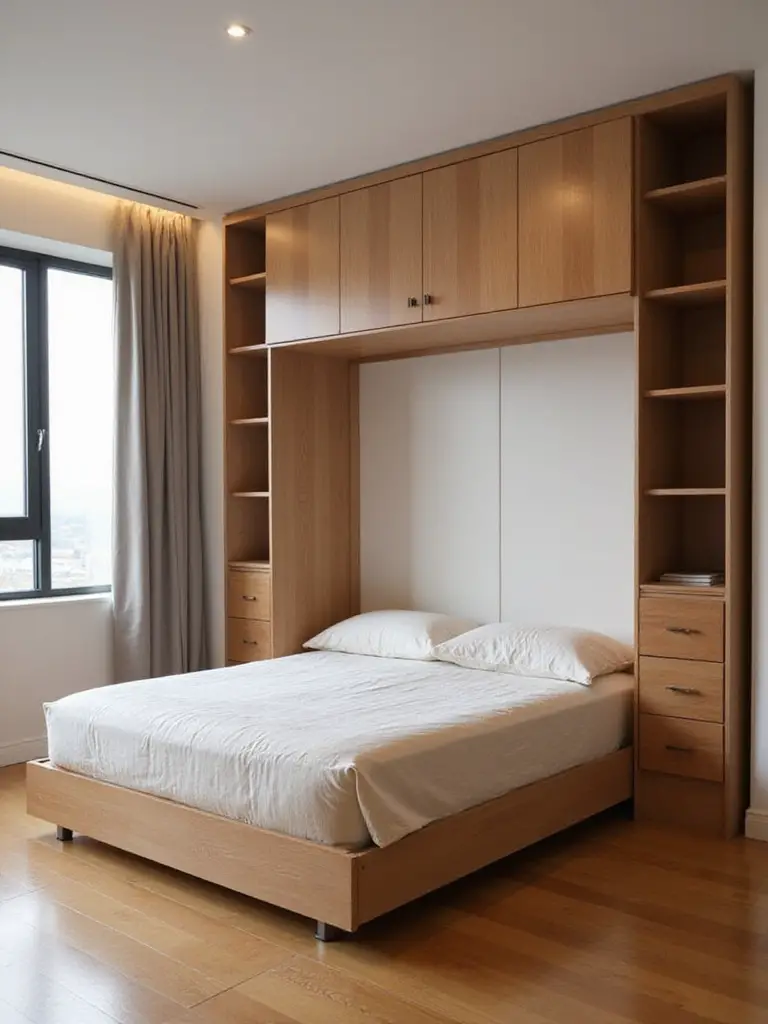
I used to think Murphy beds (the kind that fold into the wall) were clunky and old-fashioned. Then I saw a modern one integrated into a full wall unit with a fold-down desk and shelving. It was brilliant. During the day, my client had a fully functional home office and a spacious living area. At night, it converted into a comfortable, cozy bedroom. He didn’t have to choose between a proper bed and a proper workspace—he got both. Look for pieces that transform, hide, and store.
Once you have your multitasking furniture, where you put it is everything.
7. Position Your Bed Strategically for Optimal Flow and Comfort
The placement of your bed dictates the entire flow and feeling of the room. Here’s what most people get wrong: they automatically shove the bed into the biggest, longest wall. Sometimes that works, but often it chops the room in half and creates awkward, useless slivers of space. Your first priority should be creating a clear pathway. You need at least 24-30 inches of walking space around the functional parts of the bed.
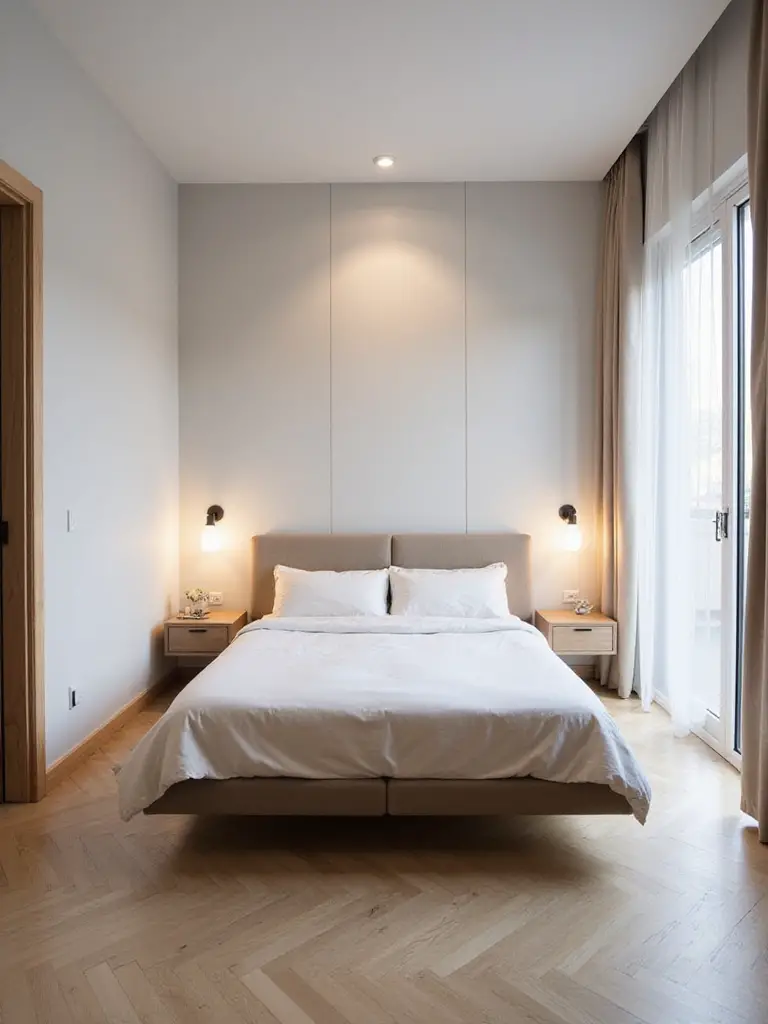
A trick I love is to “float” the bed. In some rooms, pulling it slightly away from the wall or even placing it in the middle can create two smaller, more defined pathways and make the room feel more intentional and grand. There’s also an ancient design principle from Feng Shui called the “command position,” which basically says you should be able to see the door from your bed, but not be directly in line with it. This creates a subconscious feeling of safety and control, which leads to better sleep. Don’t be afraid to experiment. Use painter’s tape on the floor to mark out different bed positions before you do the heavy lifting.
With the bed in place, let’s talk about hiding the rest of your stuff.
8. Incorporate Hidden Storage to Declutter Surfaces Invisibly
Even after you’ve decluttered, life happens. You’ll have chargers, books, remote controls, and glasses of water. The key to a serene bedroom is to make that daily mess disappear. This is where hidden storage comes in. It’s not for the junk you should have thrown out; it’s for the everyday items you need close but don’t want to see. This is why a nightstand with a drawer is a million times better than just a tabletop.
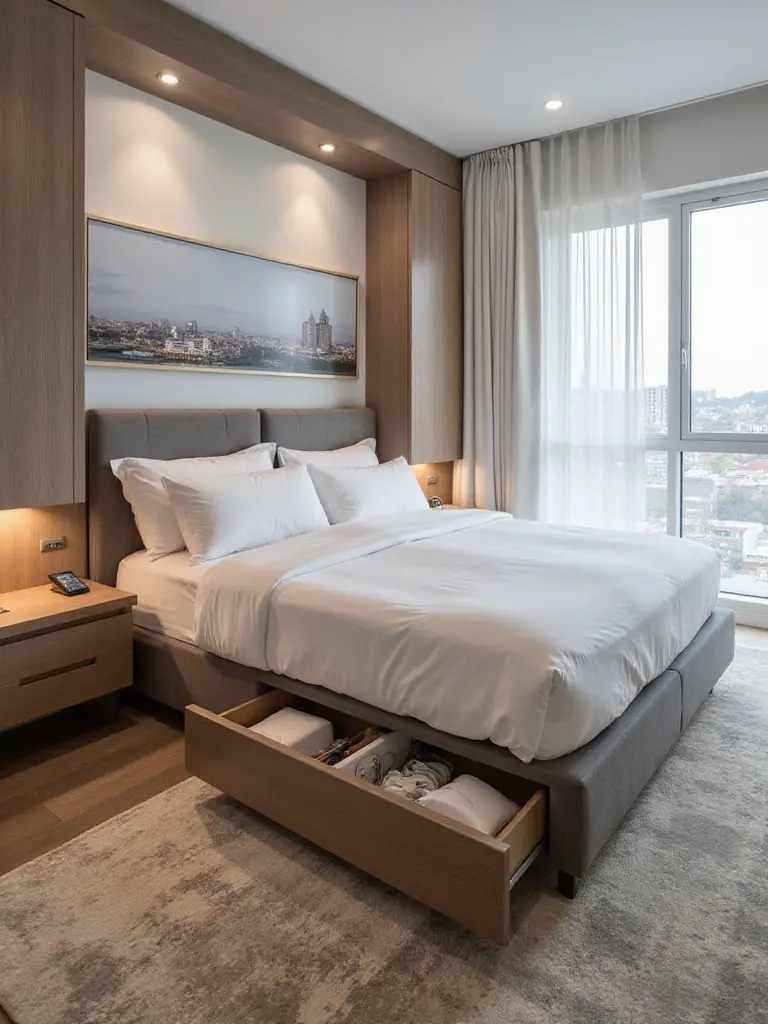
Look for opportunities everywhere. A beautiful storage bench at the foot of the bed is perfect for extra linens. A headboard with a built-in shelf or compartment can hide your books and chargers. Platform beds with hydraulic lifts that reveal the entire space underneath are incredible—I have one, and it’s where all my off-season clothes and luggage live, completely out of sight. The goal is to give your brain a visual break. Clear surfaces equal a calm mind.
Now a quick word on size, because it really does matter.
9. Choose Appropriately Sized Furniture to Avoid Overwhelming the Room
Can we talk about the tyranny of the matching bedroom set? It’s the easiest way to make a small room feel crowded and generic. You do not need a massive king bed, two hulking nightstands, and a wide, low dresser. You need furniture that is scaled to your room. Before you buy anything, measure your room and measure the furniture. Then use painter’s tape on the floor to block out the footprint of each piece. You will be shocked at how much space things actually take up.
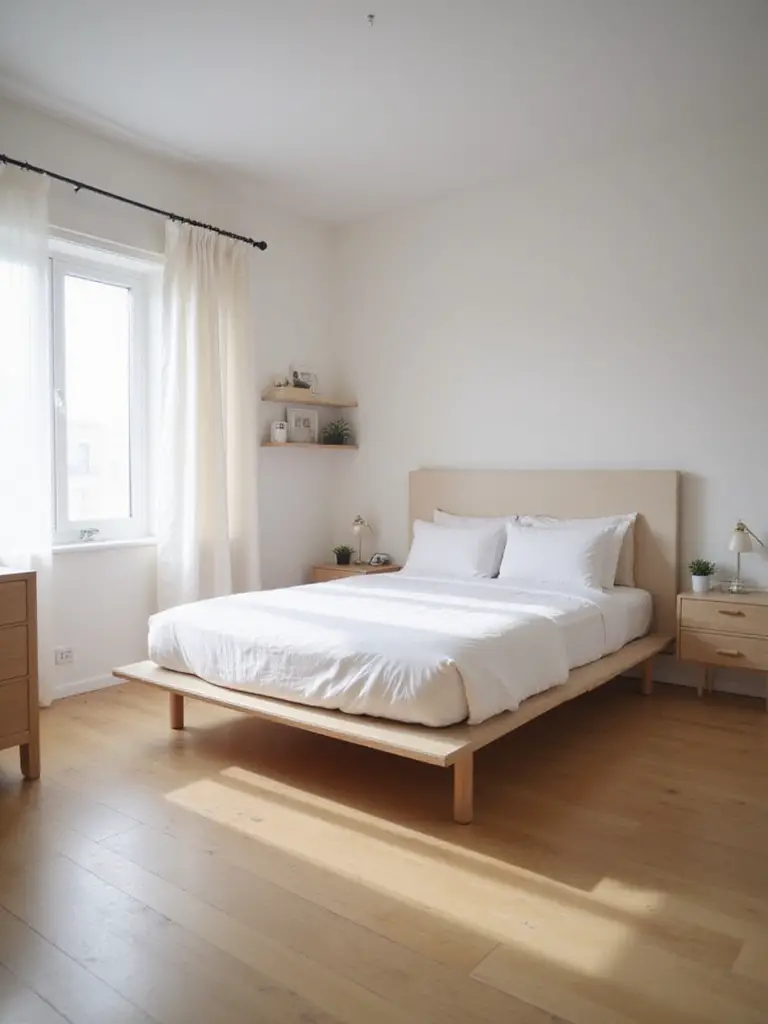
Instead of a wide dresser, look for a tall, narrow one that utilizes vertical space. Instead of bulky nightstands, try wall-mounted floating shelves or slim C-tables that can slide over your mattress. Furniture with visible legs—like mid-century modern pieces—creates a sense of openness because you can see the floor underneath. The biggest mistake is buying furniture that is too big. It’s like wearing shoes that are three sizes too large. It’s clunky, uncomfortable, and makes everything harder.
Let’s put it all together and create some zones.
10. Create Distinct Zones for Sleeping, Working, and Relaxing
Even if your bedroom is just 100 square feet, you can make it feel more functional and less chaotic by creating zones. This is about giving your brain clear signals about what you’re supposed to do in each part of the room. Your sleep zone should be sacred. Your work zone needs to be separate, even if it’s just a tiny corner. Never, ever work from your bed if you can help it. You’re training your brain to associate your sleep space with stress and alertness, which is a recipe for insomnia.
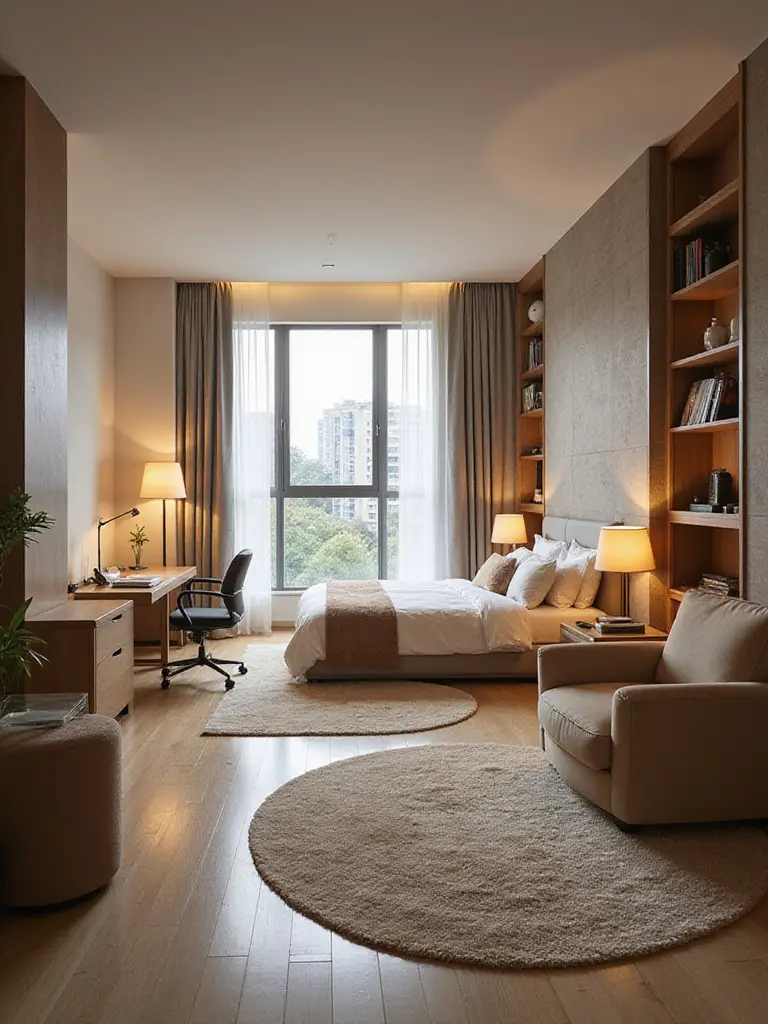
You don’t need walls to create zones. A simple area rug can define your sleeping area. A tall, open bookshelf can act as a light-permeable screen between your bed and your desk. Even a well-placed plant or a floor lamp can signal a shift from one zone to another. In my own small studio, I used a low bookcase at the end of my bed to create a visual break. It subtly separated my “living room” from my “bedroom,” and it made a huge psychological difference.
Adding Personality & Practical Decor Touches
Your room is now functional and well-planned. It’s time to give it a soul. This is the fun part, where we layer in the elements that make the space uniquely yours and ridiculously comfortable.
11. Elevate Comfort with Luxurious, Layered Bedding Textiles and Pillows
Your bed is the heart of your bedroom. It should look and feel like a cloud you get to collapse into every night. The secret to a high-end, ridiculously inviting bed is layering. Don’t just throw a comforter on top of your sheets. Invest in textures. Start with great quality sheets—linen is my favorite because it breathes and gets softer with every wash. Then add a duvet or quilt. Then, a coverlet or a textured throw blanket folded at the foot of the bed.
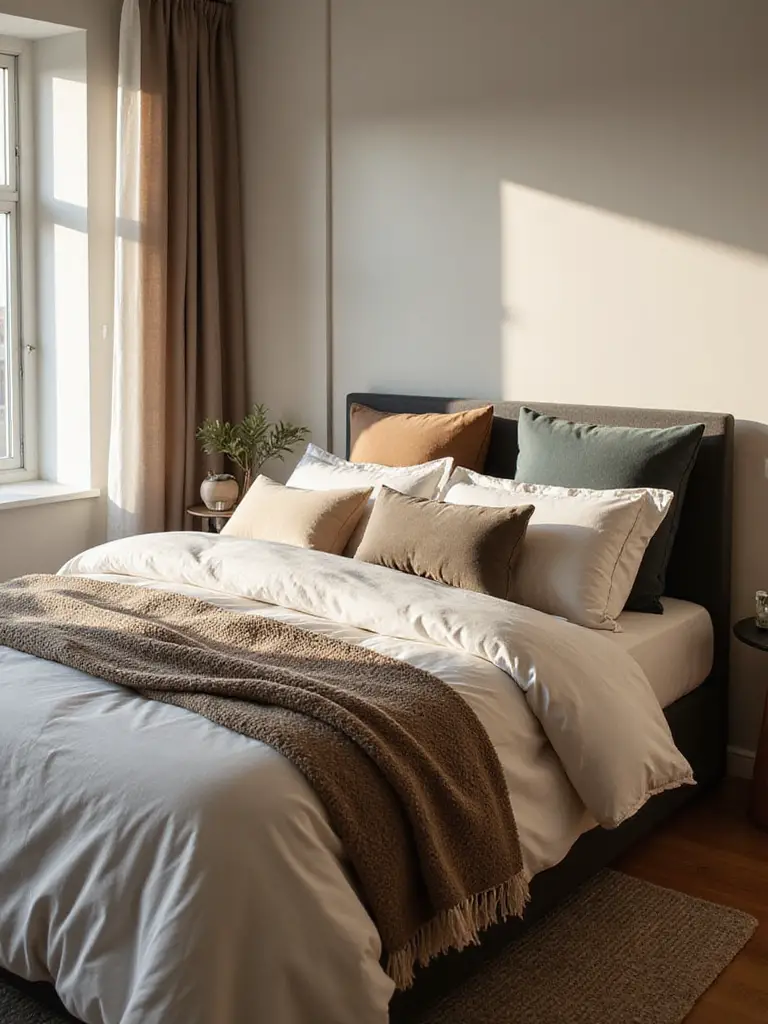
For pillows, here’s a simple, no-fail formula: two sleeping pillows, two larger Euro shams (the big square ones) behind them to add height, and one or two smaller decorative accent pillows in front. It creates a lush, full look that just begs you to jump in. This isn’t just about aesthetics; it’s about having options. On a cold night you can pull up the extra blanket, and on a warm one you can sleep with just the sheet. It’s practical luxury.
Next, let’s illuminate that beautiful bed correctly.
12. Install Smart Lighting Layers for Versatile Ambiance and Function
If you are still relying on a single, harsh overhead light, you are living in the dark ages. Literally. Lighting is everything. You need to think in layers: Ambient (the main overhead light), Task (a reading lamp by the bed or at a desk), and Accent (soft, moody light). The best and easiest way to do this now is with smart bulbs. For a relatively small investment, you can have total control over the brightness and even the color temperature of your light.
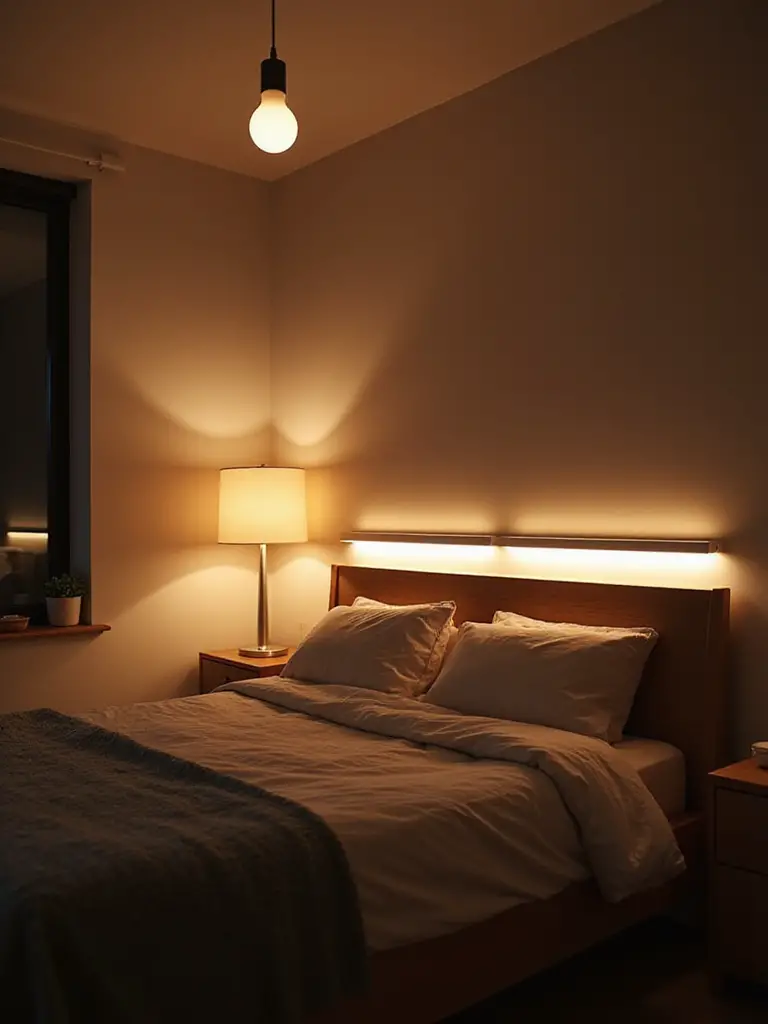
Imagine this: a “Wake Up” scene that slowly brightens your room with a cool, energizing light in the morning. A “Relax” scene for the evening that dims everything down to a warm, cozy glow, signaling to your body it’s time to wind down. A focused, bright light for your desk area when you need to work. You’re essentially painting with light to create different moods for different activities. The best shortcut? You don’t even need to rewire anything. Just swap out your existing bulbs for smart ones, or use smart plugs on your favorite old lamps to bring them into the system.
Now, for those bare walls.
13. Curate Wall Art and Mirrors to Enhance Visual Depth and Character
Please, I’m begging you, stop hanging your art too high. It’s the most common decorating mistake I see. The center of your artwork should be at eye level, which is roughly 57-60 inches from the floor. This makes the art feel connected to the room and to you, not like it’s floating off into space. Art is what tells your story and gives the room its soul, so choose pieces you genuinely love, not just something that “matches the couch.”
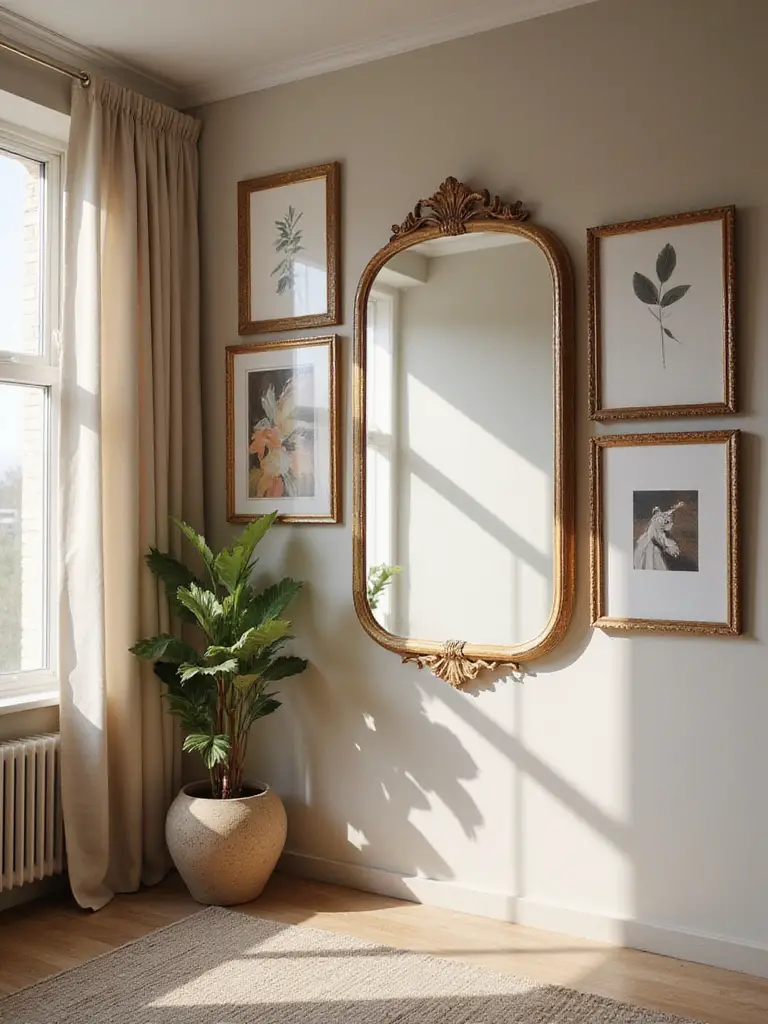
And don’t forget our secret weapon: mirrors. A beautiful, large mirror can act as a piece of art itself, while also bouncing light and creating an illusion of depth. A gallery wall is a fantastic way to fill a large space and show off your personality. Mix framed photos, prints, and even textural things like a small woven tapestry. Pro tip for renters: Command Strips are your best friend. You can create an entire gallery wall without a single nail hole.
Let’s bring in some smaller, personal storytellers.
14. Personalize with Thoughtfully Placed Accessories and Cherished Mementos
This is about turning your room from a “space” into “your place.” Your shelves and surfaces are an opportunity to tell little stories. Group objects in odd numbers—threes and fives are always more visually interesting than pairs. These little arrangements are called vignettes, and they’re a chance to display items that are meaningful to you: a rock from a favorite beach, a small bowl you bought while traveling, a framed photo of people you love.
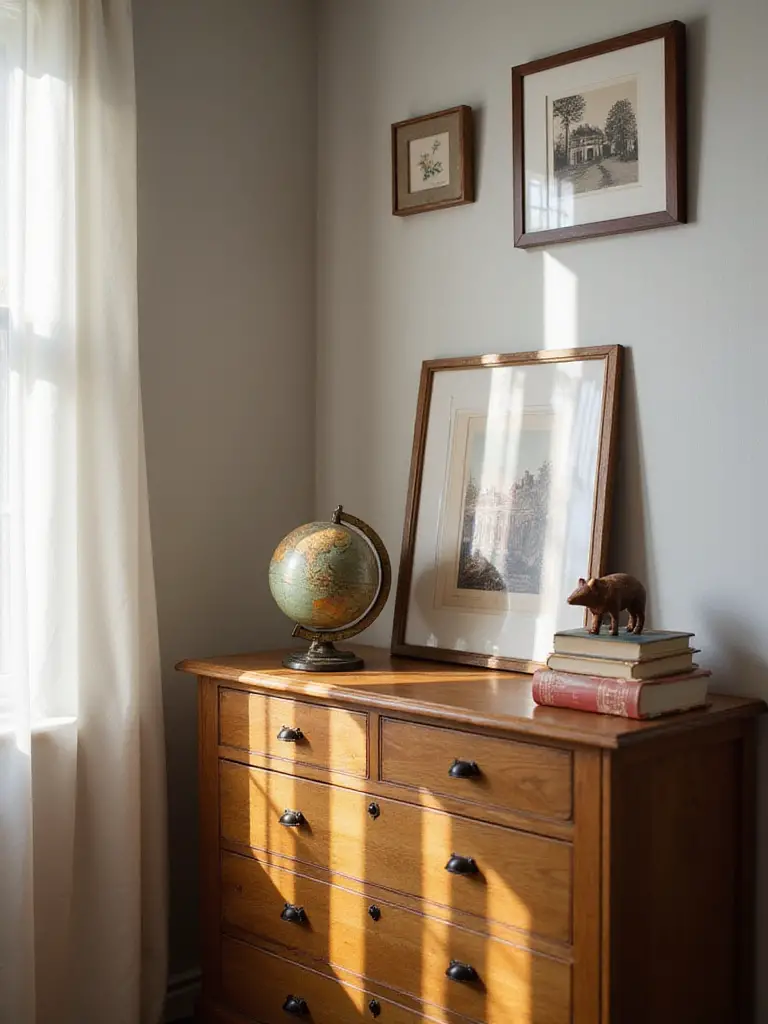
The key is curation, not clutter. Pick your absolute favorite things and give them pride of place. A decorative tray is a fantastic tool for this—it can corral a few small items (like a candle, a tiny plant, and a dish for your rings) into a single, intentional-looking group. This is what makes a room feel authentic and lived-in, in the best possible way. It’s a physical reminder of your life, your history, and your joy.
And now for my favorite part: bringing actual life into the room.
15. Integrate Plants for a Touch of Natural Serenity and Improved Air Quality
Every single room needs a plant. Period. It’s the fastest way to make a space feel alive. Plants are not just decor; they are your quiet, hardworking roommates. They literally clean the air you breathe by absorbing toxins, and their presence has been scientifically proven to reduce stress and boost your mood. Connecting with nature—even a single potted plant on your nightstand—is fundamental to our well-being. This is the core of creating a personal ecosystem.
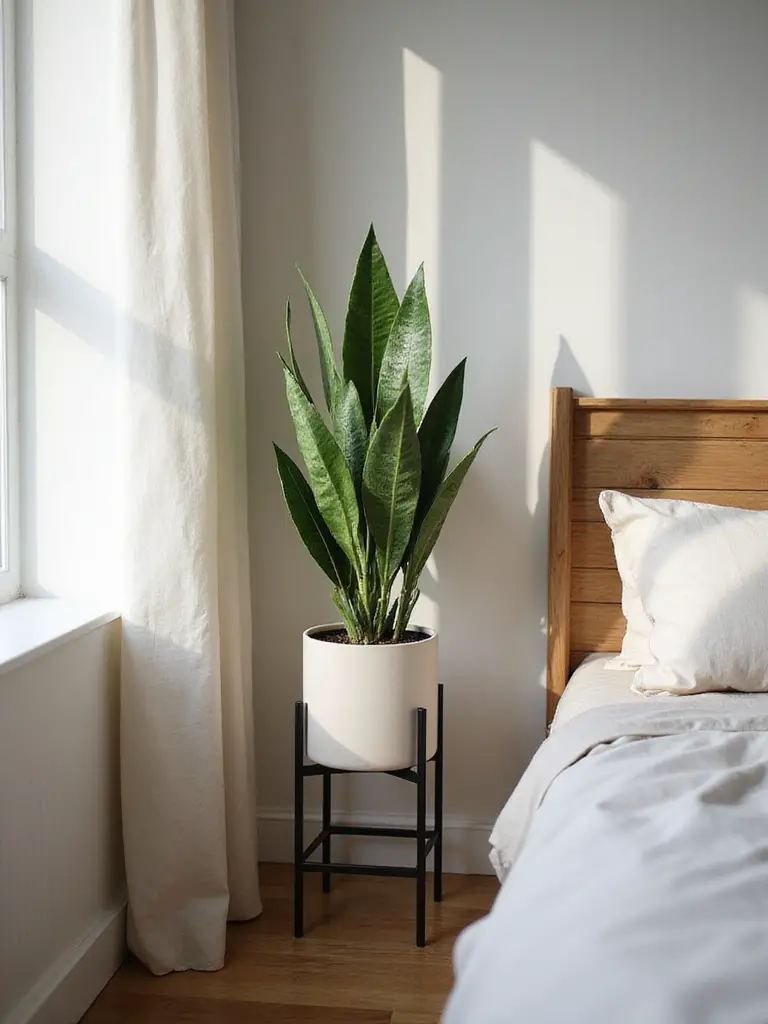
Now, don’t run out and buy a finicky Fiddle Leaf Fig just because you saw it on Instagram. Choose a plant that will actually thrive in your room’s conditions. For low-light bedrooms, a Snake Plant or a ZZ Plant are nearly indestructible. For a spot with a bit more sun, a Pothos or a Spider Plant are easy and forgiving. Give your plant a beautiful pot that complements your decor. Caring for another living thing, even a simple plant, is a powerful, grounding ritual that can make your sanctuary feel truly alive.
Optimizing Ambiance & Personal Sanctuary Creation
We’re in the home stretch. These final touches are all about fine-tuning the sensory experience of your room. This is how we transform it from a nicely decorated space into a true sanctuary that protects and restores you.
16. Master Window Treatments for Optimal Privacy and Light Control
In an apartment, your windows are your connection to the outside world, but they can also be a source of glaring light, noise, and prying eyes. Your window treatments need to be masters of control. The absolute best solution for most apartment bedrooms is a layered approach. Start with a blackout roller shade or cellular blind mounted inside the window frame. This gives you total darkness when you need it for sleep.
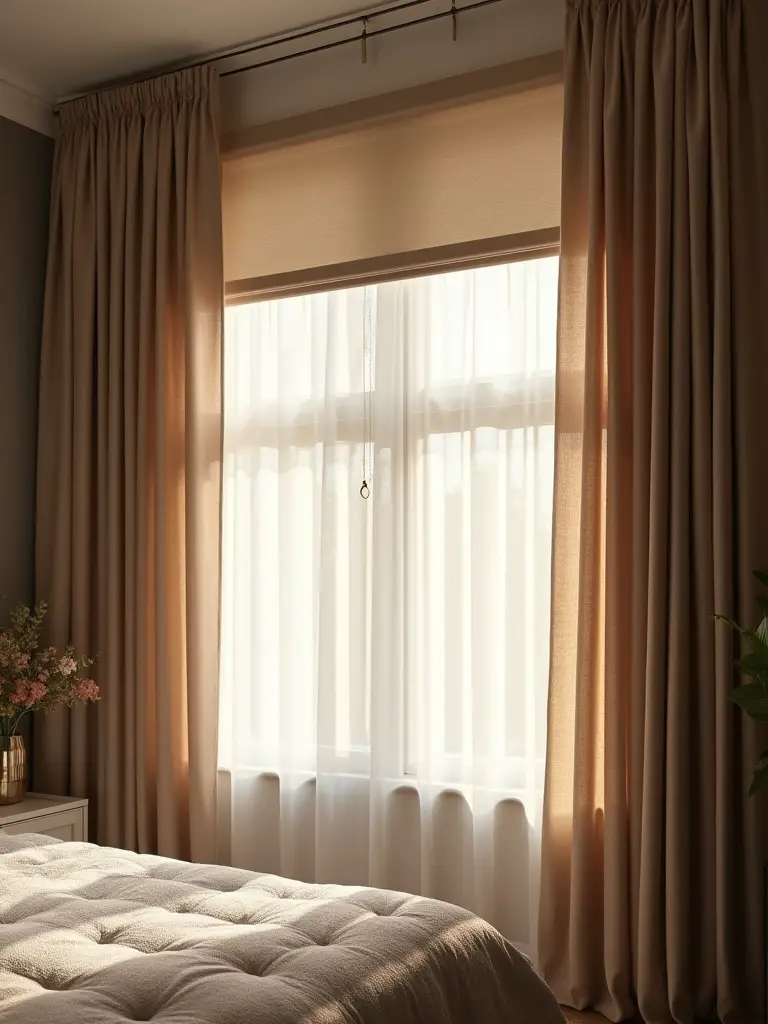
Then, hang decorative curtain panels on a rod mounted wider and higher than the window frame. This makes your window appear larger and more dramatic. You can use sheer curtains to let in diffuse light during the day while maintaining privacy, or heavier drapes for more insulation and sound muffling. A fantastic option for city dwellers is top-down/bottom-up shades. They allow you to lower the shade from the top, letting in light while keeping the bottom half of your window covered for privacy.
And speaking of privacy, let’s talk about sound.
17. Strategically Soundproof or Muffle Noise for Tranquil Apartment Living
Let’s be real: true soundproofing is expensive and probably not possible in a rental. But sound muffling is absolutely achievable. Noise is a huge source of stress and poor sleep, so think of your bedroom as a quiet cocoon. Soft surfaces are your best friend here—they absorb sound waves instead of letting them bounce around the room. A large, plush area rug with a thick pad underneath is a must on hard floors.
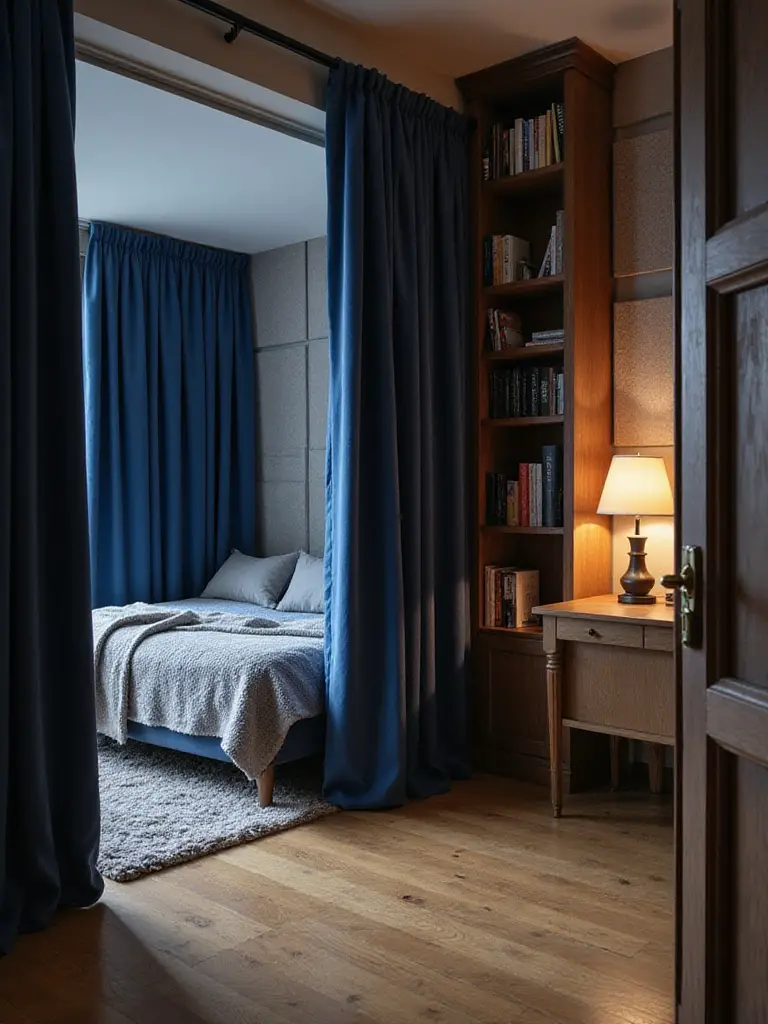
Heavy, thick curtains—like velvet or insulated thermal drapes—can do wonders for muffling street noise. A large, upholstered headboard also absorbs sound. Even a bookshelf filled with books on a shared wall can act as a sound buffer. If you’re still bothered by sharp, sudden noises (like sirens or a noisy neighbor), don’t underestimate the power of a simple white noise machine. It creates a constant, soothing soundscape that masks those jarring interruptions and protects your peace.
Let’s ensure this beautiful, quiet space stays organized.
18. Implement Smart Storage Solutions to Future-Proof Your Space
A truly smart space is one that can adapt with you. Your needs will change over time, so you need storage that is flexible. Avoid buying clunky, single-purpose furniture. Instead, invest in modular systems that you can reconfigure, add to, or subtract from as your life evolves. Systems like IKEA’s PAX wardrobes or Elfa’s shelving are brilliant because you can customize the interiors with exactly the drawers, shelves, and rods you need.
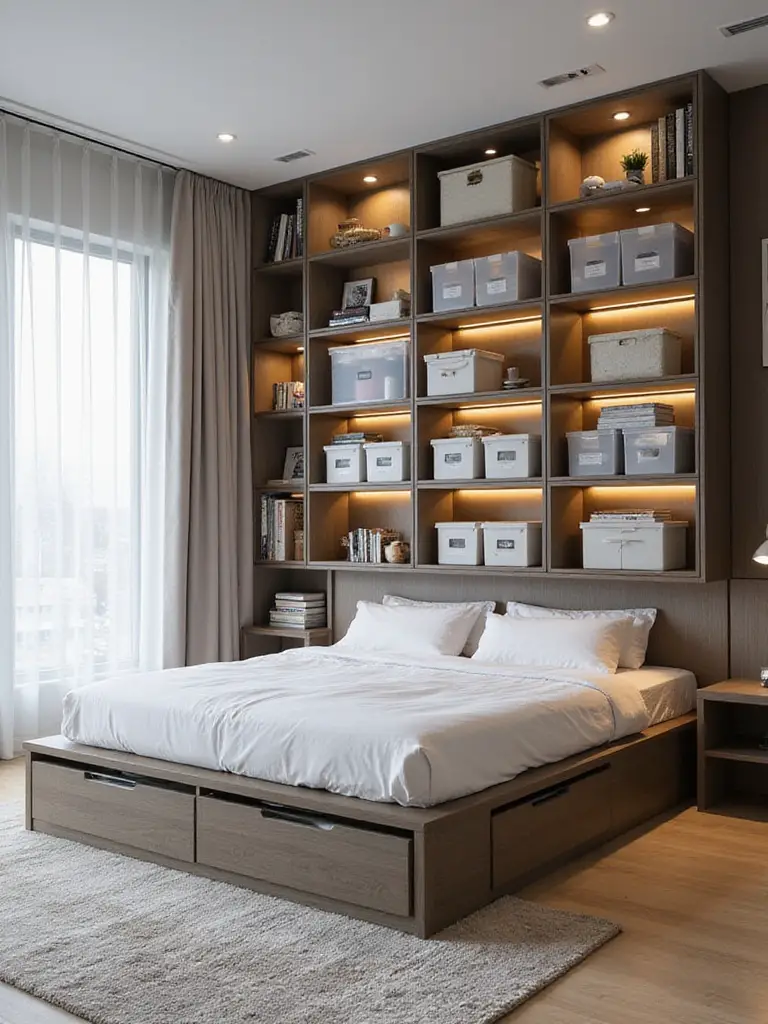
Think about how you can reclaim “dead” space. The area under your bed is prime real estate; use rolling bins or zippered bags to store seasonal clothing or extra bedding. The space above your door? Perfect for a single shelf to hold things you rarely use. The goal is to create a system that’s so efficient and intuitive that staying organized feels effortless, leaving your room (and your mind) clear and calm for years to come.
Let’s add one final grounding element.
19. Utilize Area Rugs to Define Zones and Add Warmth and Texture
A rug is the soul of a room. It grounds the furniture, defines the space, and adds a crucial layer of texture, color, and warmth. The biggest mistake people make with rugs is buying one that’s too small. A little “postage stamp” rug floating in the middle of the floor just makes the room look disconnected and sad. A rug should be large enough to anchor your main furniture.
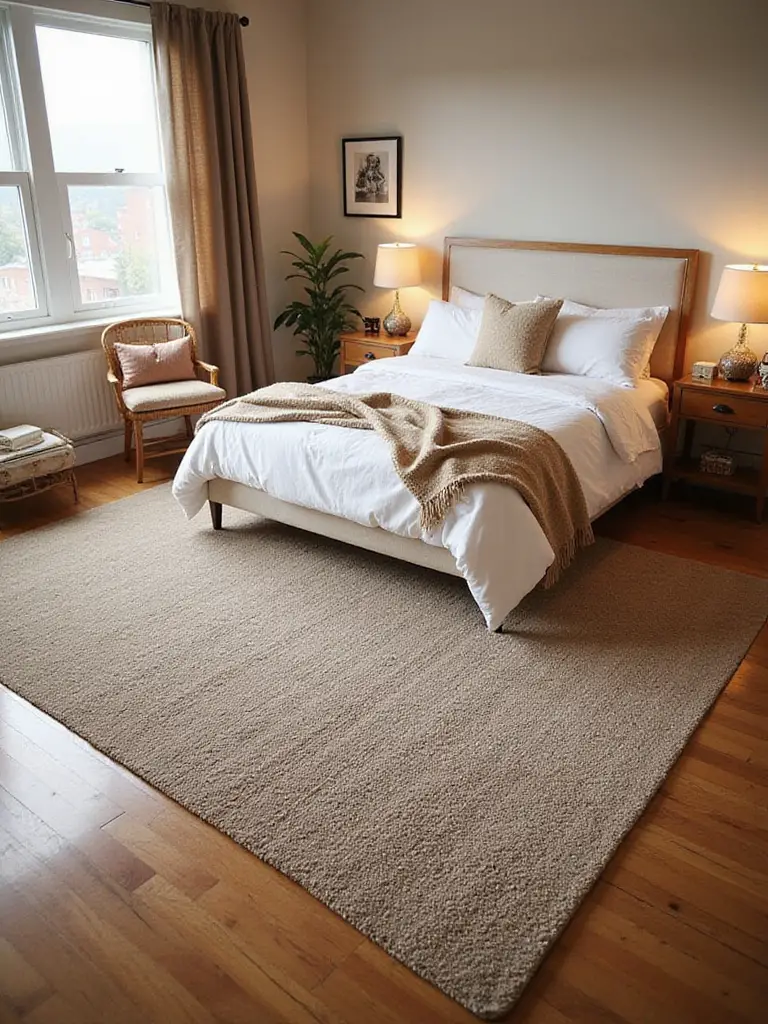
In a bedroom, the rug should extend at least 18-24 inches out from the sides and foot of your bed. The front two legs of your nightstands should be on the rug as well. This creates a cohesive, intentional zone that makes the entire room feel more pulled-together and luxurious. It also makes your first steps out of bed in the morning soft and warm. It’s a simple change with a massive impact.
And finally, the most important step of all.
20. Reflect Your Personal Style to Create a True Sleep Sanctuary
After all the practical tips and design rules, here’s the one that matters most: your bedroom has to feel like you. This isn’t about creating a space for a magazine; it’s about creating a personal sanctuary where you feel completely safe, comfortable, and at peace. Surround yourself with colors that you find genuinely calming. Hang art that speaks to your soul. Keep mementos that bring you joy. Maybe that means a minimalist, zen-like space. Maybe it means a cozy, bohemian nest full of textiles and plants. There is no right answer, only your answer.
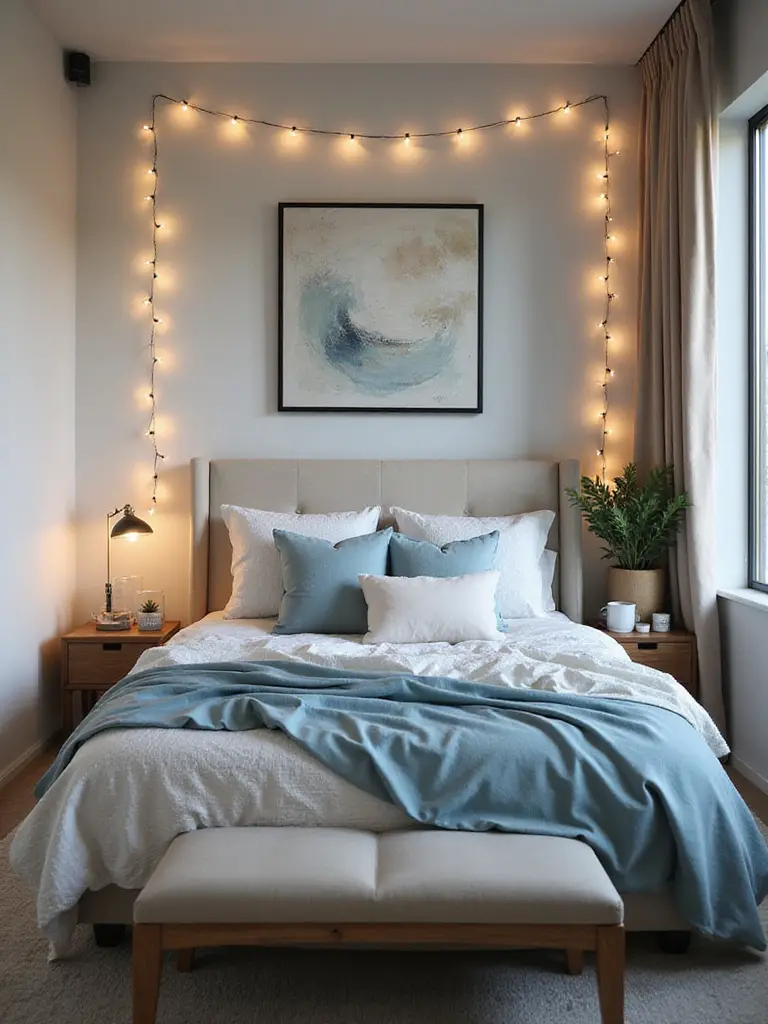
Listen to your intuition. How do you want to feel when you walk into this room at the end of a long day? Design for that feeling. A bedroom that truly reflects your inner world is a room that can truly restore you. It is the final, most crucial element in building your own personal, thriving ecosystem.
Conclusion
See? Transforming your apartment bedroom has nothing to do with spending a ton of money or having a huge amount of space. It’s about a shift in mindset. It’s about seeing your room as a living system that’s there to support your well-being. It’s about making smart, intentional choices—from where you place your bed to the kind of light you use—that create a space that is not only functional and beautiful, but deeply restorative.
You don’t have to do it all at once. Pick one thing from this list that resonates with you. Maybe you’ll finally declutter that closet. Maybe you’ll buy a beautiful new set of linen sheets. Or maybe you’ll just go get a snake plant. Every small, thoughtful change is a step toward creating the sanctuary you deserve. Your home should be the place where you can truly recharge, so go make it happen.
